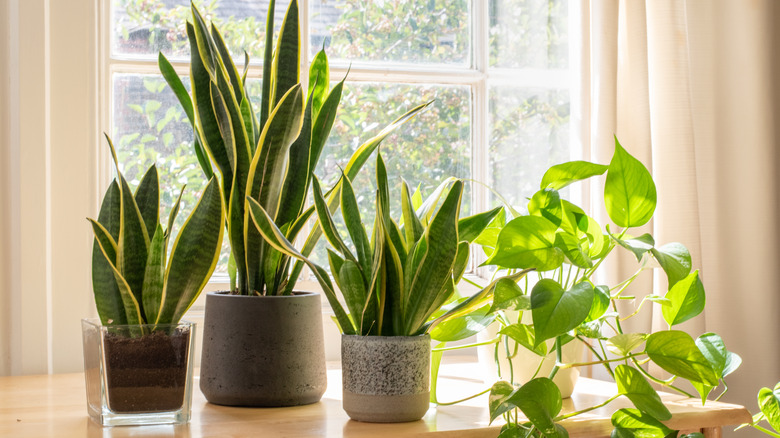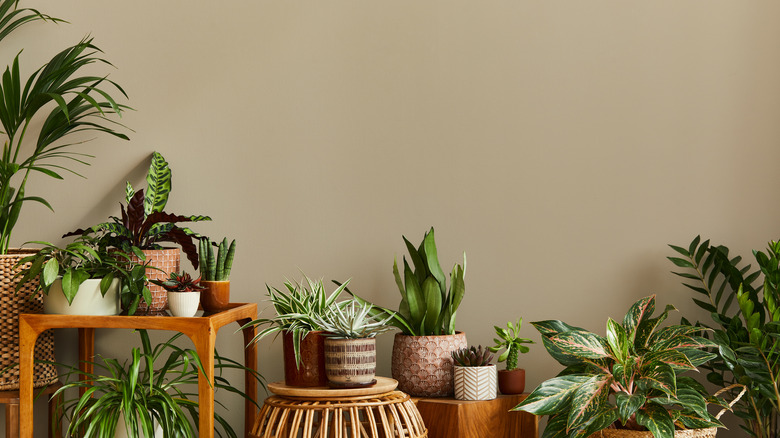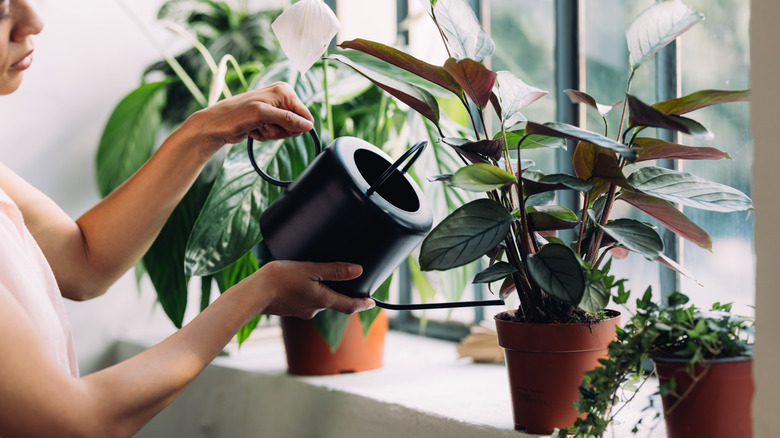The Difference Between Direct And Indirect Sunlight (And Which Your Plant Needs)
Sunlight is the energy that influences the healthy growth of your plants. However, not all sunlight is created equal. When you position yourself outside on a bright, sunny day without any barriers between you and the sun, you are experiencing direct sunlight. The sun's rays are reaching you in an unfiltered, uninterrupted manner. This type of light is intense, boasting high energy levels that can be both nurturing and damaging. Similarly, in the world of plants, direct sunlight denotes unobstructed light coming straight from the sun. This high-energy light can benefit certain plants but harm others. Sunlight itself also plays an essential role in the survival and growth of plants due to a process known as photosynthesis, in which green plants use sunlight to synthesize foods. Without light, photosynthesis cannot occur, which means the plant cannot produce the glucose it needs to grow and survive.
That being said, this doesn't mean all plants need the intensity of direct sunlight. Enter the realm of indirect sunlight, a softer, more diffused light. In a room with south-facing windows, a plant may get the brightest indirect light, but it depends on other factors like window treatments, or any obstacles to the light. Certain plants, often from forest undergrowth or tropical environments, prefer this gentler, filtered light. So, depending on the plant species, the requirement for sunlight can range from direct to indirect. This diversity makes it crucial to understand the difference between direct and indirect sunlight to determine the unique light needs of your plants. You can then provide optimal conditions for your plants to thrive and flourish.
Which plants need direct sunlight?
Many desert plants, like cacti and succulents, absolutely love direct sunlight. Originating from hot, sunny habitats, these plants need infrequent watering and have evolved to handle high-intensity light. Your Aloe Vera, with its fleshy, water-storing leaves, is an excellent example of a plant that craves direct sunlight. Herbs and vegetables are another group that generally thrive in direct sunlight. From mint and rosemary to tomatoes and peppers, these plants require lots of light to produce the flavorful leaves and bountiful fruits we love. If you're planning a kitchen garden, ensuring a sun-drenched spot is essential.
Sunflowers, aptly named, are another species that love to bask in the sun's rays. These cheerful, bright yellow flowers follow the sun's path across the sky, a behavior known as heliotropism. Not only do they need direct sunlight to grow, but they actively seek it out. With all the above said, it's important to remember that even sun-loving plants can get too much of a good thing. Intense, midday summer sun can sometimes be too harsh, leading to sunburn and scorching. Observe your plants carefully, and if you notice signs of sunburn, such as yellowing or browning leaves, consider providing some shade during the hottest part of the day.
Which plants need indirect sunlight?
Indirect sunlight, characterized by its less intense, softer nature, doesn't carry the same potential for damage as direct sunlight. This type of illumination proves to be the preferred choice for many indoor plants. In the natural world, many of these plant species, such as the Peace Lily, are native to the undergrowth of tropical forests. In such environments, sunlight filters through the overhead canopy of leaves, creating a dappled light habitat. This adaptation has programmed these plants to survive and thrive in indirect sunlight when brought indoors. For this reason, a north-facing window in your home or a spot comfortably settled a few feet away from a brightly lit window offers the gentle, indirect sunlight that many houseplants absolutely adore. The light here is bright but not direct, creating the perfect environment for these plants to flourish.
There's also the snake plant, pothos, and various fern species, all of which are splendid examples of houseplants that revel in indirect sunlight. The snake plant, also known as Sansevieria, is renowned for its hardiness and ability to tolerate little to no watering. The same goes for the pothos plant, with its heart-shaped leaves. Ferns, usually found in the understory of forests, are perfectly suited for an environment with filtered light, mimicking their natural habitat. All in all, it's crucial to remember that indirect light should not be confused with a complete lack of light. Even plants that prefer shade need some degree of sunlight to perform photosynthesis. Indeed, no plant can grow in absolute darkness.


